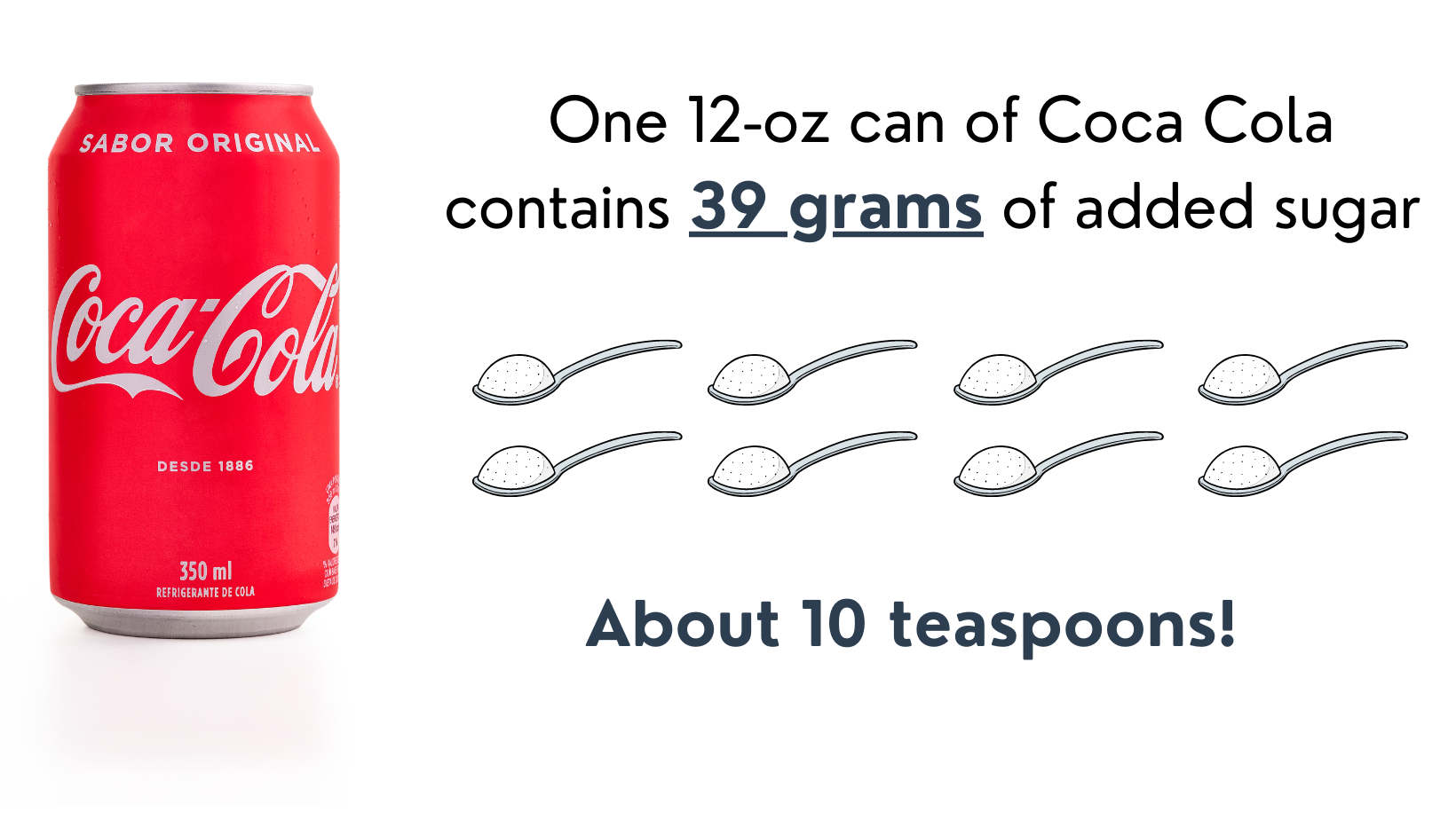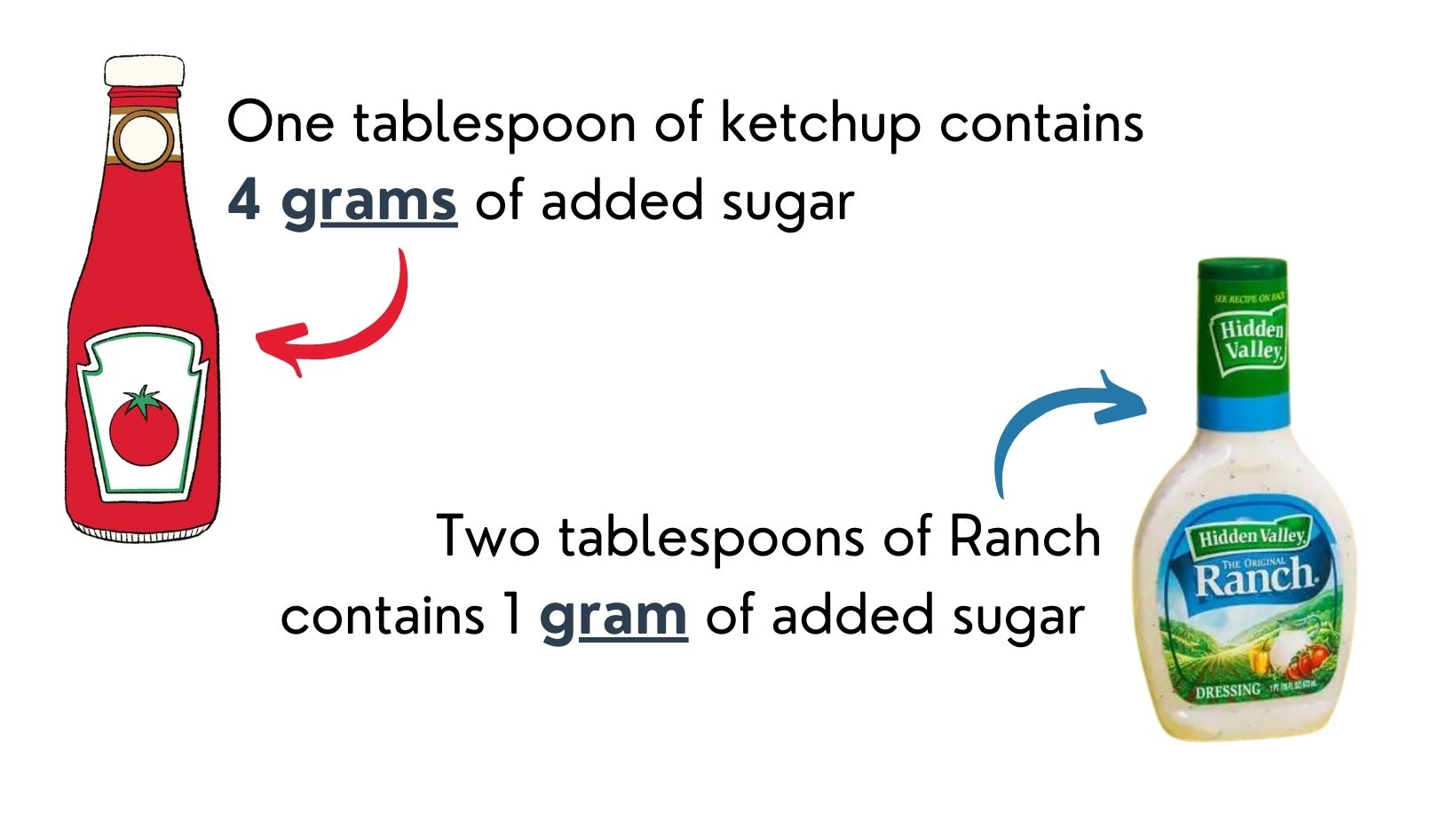
What is Sugar & Does it Affect Polycystic Kidney Disease?
May 19, 2022Consuming added sugar is associated with negative health effects including increased risk of weight gain and obesity, diabetes, and heart disease. Let’s explore how added sugar can create health problems, and how it relates specifically to PKD health. Plus, tips on how to read food labels so you can avoid added sugar and steps to take to begin reducing your intake.
What is Sugar?
Sugar is a carbohydrate.
There are three main types of carbohydrates – starch, fiber, and sugar. Starch and fiber are complex carbohydrates. Sugar, whether natural or processed, is a simple carbohydrate your body can use for energy.
During digestion, all carbohydrates are broken down into glucose which is then absorbed into your bloodstream. Your body breaks simple sugars down quickly and easily leading to a rise in blood sugar level, also known as blood glucose. Glucose/sugar is used as energy for your body and can either be used immediately or stored for later. Our bodies can only store small amounts of glucose/sugar, called glycogen in storage form, in our muscles and liver.
The excess energy, not used or stored, is converted to fat. That's right, excess carbs are stored as fat! Including both body fat and triglycerides.
There are two types of sugar, naturally occurring and added. Your body doesn’t differentiate between natural and added sugar, it's processed the same. However, naturally occurring sugars come packaged in whole foods which also provide beneficial vitamins, minerals, and fiber.
Refined sugars are added by manufacturers during preparation and processing. Sugar is added to foods for sweetness and taste. But it's also used as a preservative or to help thicken, soften, or add texture.
The main sources of added sugar in American Diets are sweetened beverages (soda, fruit juice, sports drinks, energy drinks) and dessert items. These aren’t the only sources though, added sugar is it is found in sauces, condiments, and even vitamins!
Added sugar has no nutritional value, it is quickly digested by the body into blood glucose and causes a rise in blood sugar.
The Science of Sugar
Consuming a diet that is high in added sugar has been shown to increase the risk of obesity, diabetes, high blood pressure, kidney disease, and heart disease. Let’s look a little closer at these.
Obesity
There is strong evidence that a higher intake of added sugar, specifically sugar-sweetened sodas and beverages, directly leads to weight gain. Sugary beverage consumption “promotes weight gain in children and adults”. Added sugar adds calories without any benefit. Obesity can be a contributor to the development of diabetes, heart, and kidney disease.
Why does this matter for PKD? Obesity is associated with faster progressing PKD and with a greater yearly increase in Total Kidney Volume (TKV). Pathways and mechanisms that are known to drive cyst growth are more active in the setting of obesity.
Type 2 Diabetes (T2DM)
Added sugar by itself does not cause diabetes. A diet high in added sugar does promote insulin resistance and obesity. Both of which are strong risk factors for type 2 diabetes. When poorly managed, diabetes damages the kidney’s blood vessels reducing their ability to filter blood and remove fluid and waste. Diabetes is one of the top causes of Kidney damage and disease. Along with kidney disease, T2DM also increases the risk of heart disease.
Why does this matter for PKD? PKD cells have an altered metabolism compared to other cells in the body and kidneys. They thrive on sugar as an energy source. Individuals with PKD and type 2 diabetes have been shown to have larger kidney size and have an earlier onset of hypertension (HTN).
Gout
Studies have found an association between the consumption of sugar-sweetened beverages (SSB) and an increased risk of elevated uric acid levels, hyperuricemia, and gout in adult populations. Of particular interest is high fructose corn syrup (HFCS). When HFCS is consumed in larger quantities uric acid is generated as a waste product.
Why does this matter for PKD? For reasons that aren’t completely understood, uric acid levels run higher in people who have PKD. PKD is associated with elevated uric acid levels and a diagnosis of gout. A greater concentration of uric acid crystals also has the potential to form kidney stones and cause kidney injury with PKD.
Elevated Triglycerides (TG)
Triglycerides are a form of fat in the bloodstream and our body tissues. Excess sugar consumption, when not used, can be converted to triglycerides. Increased added sugar intake can lead to increased triglycerides in your blood, which in turn leads to an increased heart disease risk.
Heart Health
There is a “significant relationship between sugar consumption and increased risk” for cardiovascular disease. Factored into this is the association between sugar consumption and obesity, and the contribution of obesity to an increased risk for heart disease. To sum it up, high added sugar diets can lead to obesity, elevated triglycerides, and increased blood sugar levels – all of which are significant risk factors for heart disease.
Why does it matter for PKD? Hypertension (HTN) is common with PKD, 50-75% of those who have PKD have high blood pressure. HTN is frequently one of the earliest symptoms of PKD and, when poorly managed, is associated with a greatly increased risk of cardiovascular complications and greater TKV. Other factors that can be present with PKD regarding heart health are left ventricular hypertrophy (LVH) and aneurysms. Bottom line, with PKD there are cardiovascular concerns and potential complications. Having a proactive diet = also supporting heart health.
Recommendations
The Dietary Guidelines for Americans and the American Heart Association (AHA) have slightly different recommendations when it comes to how much to limit added sugar to.
AHA recommendations, the stricter of the two, are as follows.
- Men - no more than 150 calories/day from added sugar, that’s 36 grams of sugar and about 9 teaspoons.
- Women - no more than 100 calories/day from added sugar, that’s 24 grams of sugar and about 6 teaspoons.
I like to recommend limiting added sugar to 25 g or less per day! Keeps it easy to remember.

To put these recommendations in perspective, the average American consumes over 17 teaspoons a day of added sugar!
 On average, a 12-ounce soda has 10 teaspoons (40 grams) of added sugar. There is sugar “hiding” in lots of processed and prepared food that you won’t even think to look at – ketchup, chicken broth, ranch dressing, you name it – sugar has been added! Not only has it been added, but it also adds up quickly.
On average, a 12-ounce soda has 10 teaspoons (40 grams) of added sugar. There is sugar “hiding” in lots of processed and prepared food that you won’t even think to look at – ketchup, chicken broth, ranch dressing, you name it – sugar has been added! Not only has it been added, but it also adds up quickly.

Reading a Label for Added Sugar
Updated in 2021, the Nutrition Facts Label now lists added sugar.
Let me show you what to look for regarding added sugar. This will help guide you in making better, more informed choices.

- Check the serving size, there might be more than one in the package! Nutrition is based on one serving.
- Total Carbohydrates – this includes natural and added sugar, starch, and fiber.
- Total Sugars – this includes natural and added sugar.
- Added Sugars – this is what you are looking for! This is the sugar that didn’t naturally occur in food and has been added. You want this number at ZERO or as close to ZERO as possible.
Check out this Interactive Nutrition Facts Label! Always good to know how to read a label and what percentages and numbers mean.
Some of the surprising items I find added sugar in are salsa, pickle relish, and pasta sauce! Go check your pantry - what find surprises you?
Reading a Label for Added Sugar
You can also use ingredient lists on food packages to help identify added sugars. The ingredient list can be tricky because refined sugar goes by many different names, it has over 60 different names on food labels! The name listed depends on the source of sugar and how it was made.
Added sugars hide in plain sight.
Here's are some common names for added sugars:
- Cane juice
- Cane syrup
- Honey
- Maple syrup
- Molasses
- Agave nectar
- Brown sugar
- Cane crystals, sugar
- Corn syrup
- Dextrose
- Evaporated cane juice
- Fructose
- Fruit juice concentrates
- Glucose
- High-fructose corn syrup (HFCS)
- Honey
- Invert sugar
- Lactose
- Raw sugar
- Sucrose
- Sugar
What You Can Do
Follow these steps to minimize added sugar in your diet.
- Skip sugar-sweetened drinks, water is your best option!
- Choose fresh and whole, unprocessed food.
- Look at the packaged and prepared food you eat regularly, do they have added sugar?
- Buy plain yogurt and add fresh or frozen berries instead of buying flavored, sugar-loaded yogurt.
- Check your condiments, sugar likes to hide in them. Swap out the ones with added sugar.
- Choose marinades, nut butters, and sauces with zero added sugars.
- Make your own salad dressings, or use EVOO + vinegar
The best way to limit your added sugar intake is to prepare your meals at home and avoid buying foods and drinks that are high in added sugar.
Don't worry, your taste buds can adjust to sweetness levels! As you consistently reduce your total added sugar intake, you will notice your sweets cravings lessen or that certain foods now taste naturally sweet.
What is the first step you are going to take to lower your added sugar intake?

